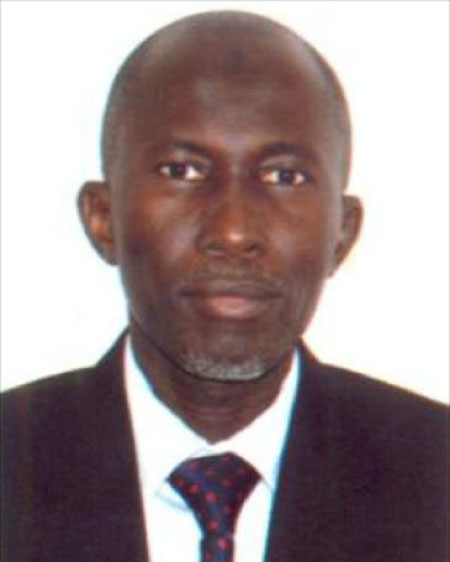
The Monetary Policy Committee (MPC) of the Central Bank of The Gambia (CBG) has indicated that the country’s reserve money grew by 11.9 per cent at end-March 2016 from 12.4 per cent in 2015.
However, the domestic debt of the country increased to D23.2 billion at end March 2016 compared to D19.3 billion in March 2015.
This was declared on Thursday at a press briefing held at the Conference Room of the CBG in Banjul.
According to the MPC report, presented by CBG’s Governor Amadou Colley, “Reserve money, the Central Banks operating target, grew by 11.9 per cent in the year to end-March 2016 from 12.4 per cent a year earlier. This was solely as a result of the 39.7 per cent increase in the NDA [net domestic assets] of the Central Bank.”
Speaking about money and banking sector developments, Governor Colley said, growth in key monetary aggregates slowed significantly in the year to end- March 2016.
Broad money, he said, grew by only 0.7 per cent in March 2016 compared to 13.6 per cent in March 2015 “mainly reflecting the significant contraction in the net foreign assets (NFA)” of the banking system.
The net domestic assets (NDA) of the banking systems, on the other hand, rose by 23.0 per cent to D20.2 billion, he said.
According to the financial soundness indicators, the banking sector remains safe and sound, Governor Colley said, adding that the industry risk-weighted capital adequacy ratio averaged 36.5 per cent in March 2016, higher than the required minimum of 10.0 per cent.
Total assets increased to D29.4 billion in the year to end-March, or 4.8 per cent from a year ago attributed primarily to 13.0 per cent increase in investments, he said.
On domestic debt, Governor Colley said the country’s domestic debt rose to D23.2 billion at end-March 2016 (54.7 percent of GDP) compared to D19.3 billion (48.3 percent of GDP) in March 2015.
“The outstanding stock of Treasurybills and Sukuk Al Salam (SAS) combined, (66.2 per cent of the debt), decreased to D15.4 billion, or 2.2 per centfrom a year ago,” he said.
He continued: “Yields on all the government securities increased. The yield on the 91-day, 182-day and 364-day Treasury bills rose from 12.7 percent, 15.6 percent and 17.7 percent in March 2015 to 17.66 percent, 18.24 per cent and 22.12 per cent respectively in March 2016.
“Similarly , the yield on the 91-day, 182-day and 364-day SAS increased from 13.74 per cent, 15.94 per cent and 18.61 per cent in March 2015 to 17.54 per cent, 18.27 per cent and 22.13 per cent respectivelyin March 2016.”
On Government fiscal operations, Governor Colley said that preliminary data on government fiscal operations for the first quarter of 2016 indicated that total revenue and grants amounted to D2.20 billion, slightly higher than the D2.19 billion outturn in the same period last year.
Domestic revenue, comprising tax and non-tax revenue, increased to D2.1 billion, or 5.0 percent from the first quarter of 2015.
“Total expenditure and net lending (including payment of arrears and outstanding commitments) decreased to D2.5 billion, or 3.0 per cent over the corresponding quarter of 2015,” he said.
“The overall budget balance (excluding grants) on commitments basis, was D392.12 million (1.0 percent of GDP) compared to D580.20 million (1.5 per cent of GDP) in March 2015. The budget balance (including grants) on commitment basis amounted to D244.4 million (0.6 per cent of GDP) compared to D391.7 million (1.0 per cent of GDP) in the same quarter in 2015.”
The Central Bank governor also said that the country’s economic activity was stronger in 2015 relative to 2014 owing to the recovery of the agricultural sector, tourism and trade from the impact of drought and the spillover effects of the Ebola outbreak in the sub-region in 2014.
“According to the Gambia Bureau of Statistics (GBOS,) the Gambian economy is estimated to have grown by 4.7 per cent in 2015, higher than the 0.9 per cent in 2014,” he said.
“Agricultural output rebounded from 7.1 per cent contraction in 2014 to a growth of 7.0 per cent in 2015. Industry value-added is estimated at 8.2 per cent, significantly higher than the 2.7 per cent in 2014 attributed to the increase in the output of construction, electricity and mining sub-sectors. “However, services value-added grew modestly by 3.3 per cent, lower than the 6.0 percent in 2014.”



